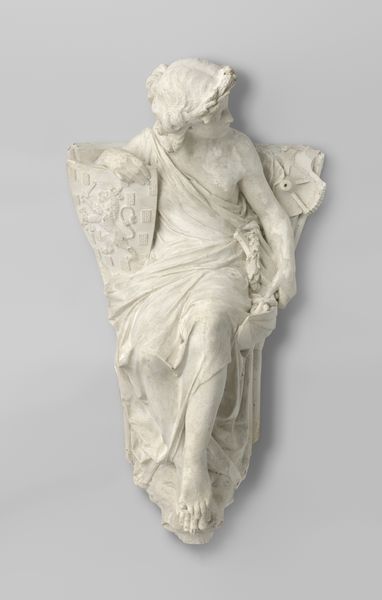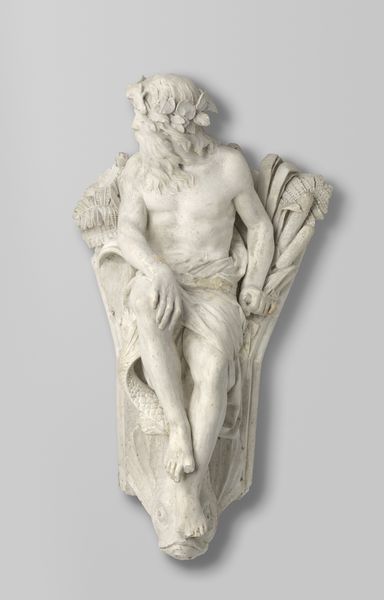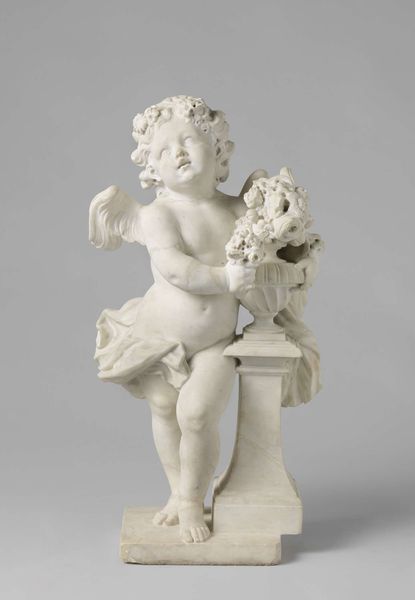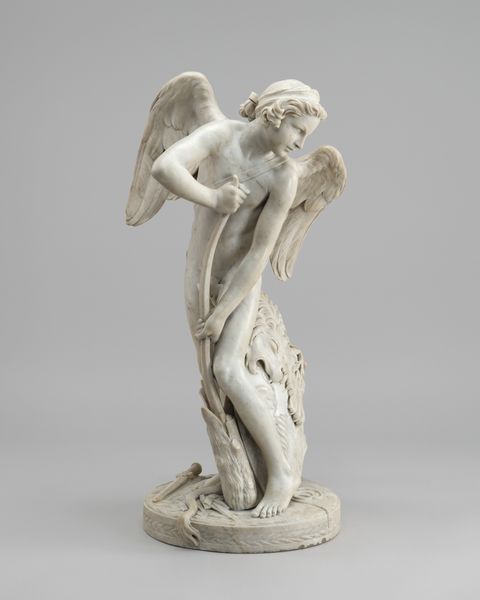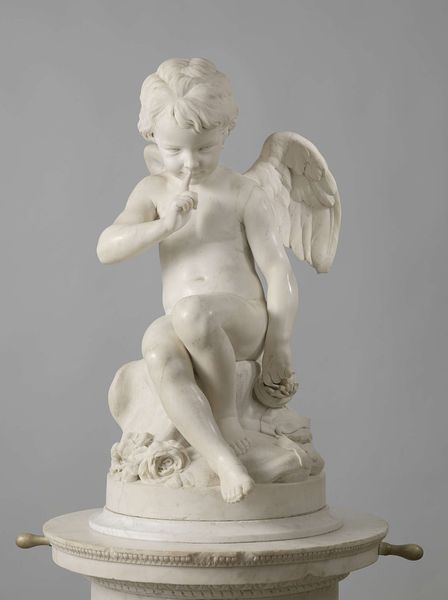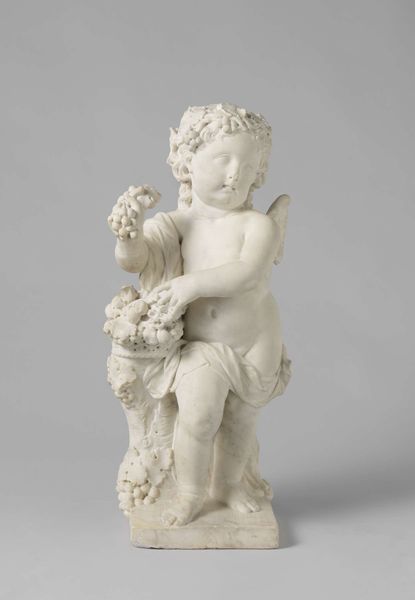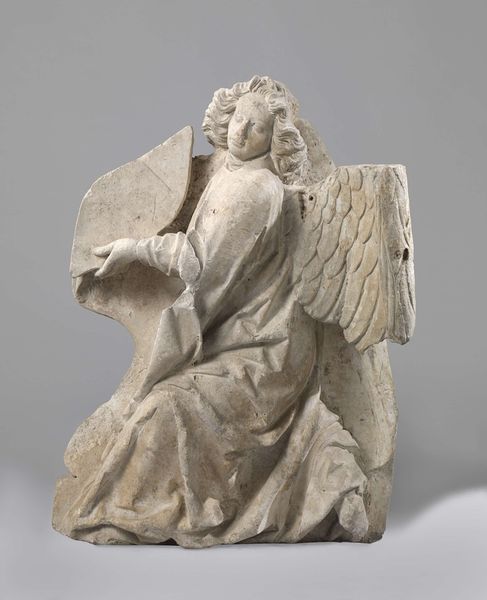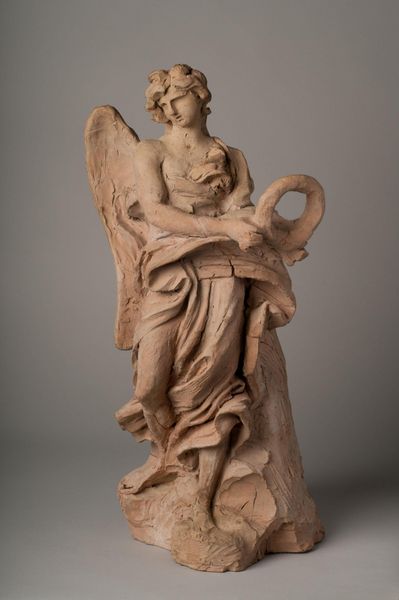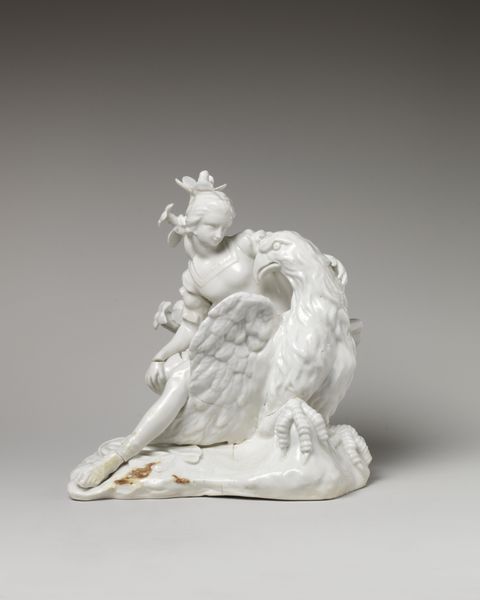
alabaster, sculpture
#
portrait
#
baroque
#
sculpture
#
alabaster
#
figuration
#
sculpture
Dimensions: height 35 cm, width 33 cm, depth 8 cm, weight 9.2 kg
Copyright: Rijks Museum: Open Domain
Artus Quellinus II created this marble Head of a Cherub, characteristic of the Baroque period. During the 17th century, the Catholic Church used art to inspire religious fervor. Cherubs, with their soft features and serene expressions, were often depicted to evoke feelings of innocence and divine love. Quellinus, who came from a family of artists, was deeply influenced by the Italian Baroque style, blending its dramatic flair with local artistic traditions. Consider the racial and gendered implications of this cherub. While seemingly universal, the cherub embodies a very specific ideal of beauty – fair-skinned, light-haired, and infantile. This sculpture reflects the power dynamics of the time, reinforcing the dominant European aesthetic standards. The emotional impact of this piece lies in its quiet, contemplative mood. The cherub’s eyes are closed, inviting us to reflect on themes of peace and spirituality. This work not only represents religious devotion but also perpetuates particular notions of beauty and purity that are still relevant today.
Comments
No comments
Be the first to comment and join the conversation on the ultimate creative platform.


